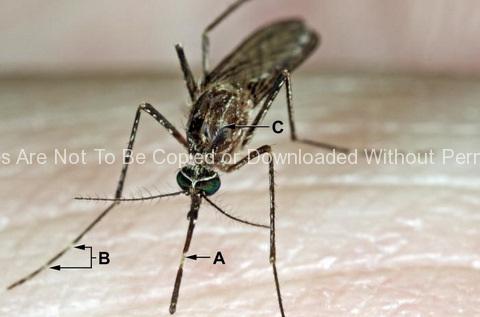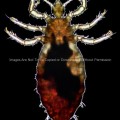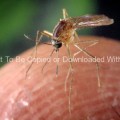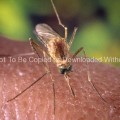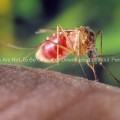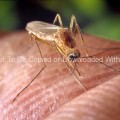This photograph depicted a close-up view of a Culex tarsalis mosquito as it was about to begin feeding, after having landed on the skin of what will become its human host. Note the light-colored band wrapped around its dark-scaled proboscis (A), and the multiple similarly light-colored bands wrapped around its distal appendages, i.e., the tibia and femur, of its forelegs and middle pair of legs (B), identifying this as C. tarsalis.
Other identifying characteristics include the presence of two silver dots on its dorsal scutum, however, in this particular image, only one of the two bilateral silver scutal marks is visible (C), and a blunted distal abdominal tip, which is not visible in this view. The epidemiologic importance of C. tarsalis lies in its ability to spread Western Equine Encephalitis (WEE), St. Louis Encephalitis (SLE), and California Encephalitis, and is currently the main vector of West Nile virus in the Western United States.
